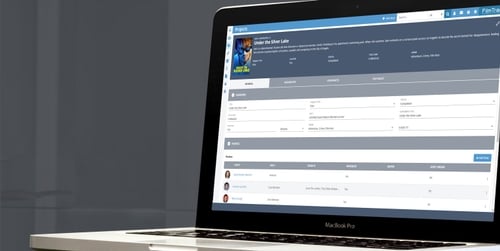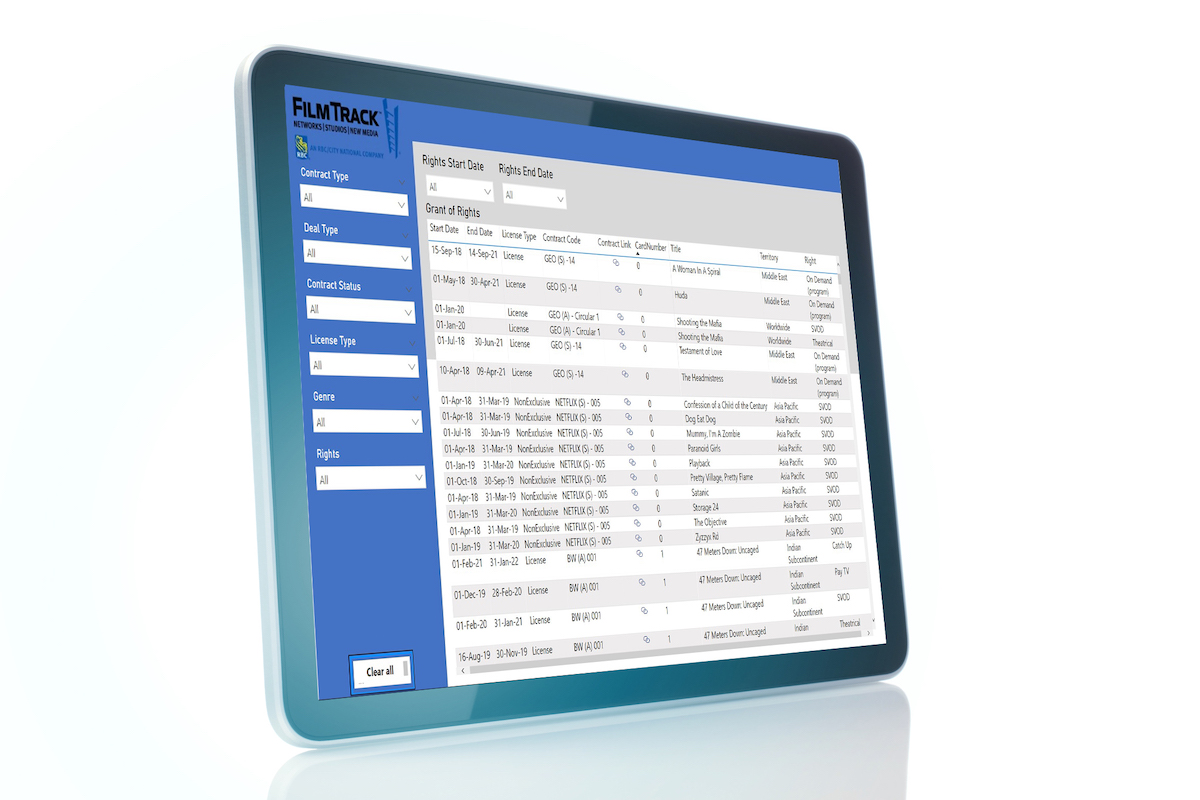Formulating a distribution strategy can feel like entering a maze. Not only might you be contending with hundreds of films sprawled across a dozen or more genres, but there's also a host of options with distribution from linear to streaming services, on-demand, VOD, and FAST channels, etc.—not to mention smaller niche options like educational outlets, airlines, cruise lines, hospitals, museums, and correctional institutions to name a few.
Matching up all the possibilities and emerging with an effective distribution strategy may sound challenging, but it doesn’t have to be. Reliable, accurate data can drive you to the best possible approach, provided that data is acquired and applied systematically and rigorously.
Using Data to Analyze Your Library
Developing a distribution strategy starts with data analysis of your library. This is analogous to self-scouting in sports, which is the process through which teams design both short- and long-term strategies, then alter them accordingly based on data from ongoing performance.
Consider the example of a small library with approximately 30 titles spread across four genres:
- Documentaries
- Independent films
- Animation
- Short features
How can data best be applied to define a distribution strategy?
The data needs to be complete and include at least two or three of the following parameters, and more if possible:
- Audience demographics
- Viewing habits
- Film preferences
- Online behavior and social media engagement
- Preferred interface and format
- Advertising response
For the sake of this sample, assume that the combination of documentaries and independent films generates 60% of the library’s revenue while the remaining revenue is evenly split between the other two genres.
That number can act as a focal point for a distribution strategy. It makes it possible to narrow the possible distribution outlets to a half-dozen platforms or channels dedicated to documentaries, independent films, or a combination of both.
Breaking Down the Distribution Outlets
The next step is to analyze the data breakdown for those half-dozen possibilities. One or two might eliminate themselves based on a narrow focus—i.e., an overt emphasis on one genre at the expense of the other or an audience that isn’t large enough to support and increase the ongoing revenue stream.
The data can also dictate at least some final parameters, e.g., an audience size of at least 500,000 subscribers and offerings in both genres.
If there’s more than one contender that fits these parameters—a pair of streaming services, for instance— the data might indicate that the audience in one leans toward socially conscious engagement in the social media activities of its audience, and this may match up well data-wise with the existing indie films in your library.
If the numbers are substantial for both contenders, that will dictate a distribution strategy based on using both platforms initially. Marketing campaigns could then be designed for both, with the click-through rate on ads used to measure subsequent performance.
The resulting data could be used in other ways, too. With documentaries, combining individual performance and audience social media patterns might dictate a preference for documentaries about particular industries, specific political movements, or a given period of history.
What About the Rest of the Library?
Once that fundamental distribution decision has been made, the next step would be to break down the rest of the library. At first glance, it might seem prudent to write off both animation and short features based on their fair-to-middling performance, but the data might indicate otherwise.
In animation, for instance, there might be a total of half-dozen titles—one-star performer, another film that’s doing well, and four others that aren’t being viewed or getting much audience engagement.
That could dictate archiving the lesser films, then taking a deeper data dive into the two successful films. That, in turn, could lead to an acquisition strategy for future animation titles if the revenue and performance data are strong enough.
The same data analysis tactics could be applied to short features as well. Successful ones might have audience demographics that intersect with those of the independent film audience on one or both streaming services, which indicates the possibility of trying them as part of the independent film package and acquiring more similar titles.
Future Growth Possibilities
Once this distribution strategy has been established, the existing data becomes even more valuable for growing the library and weeding out films that don’t perform well.
It's important to note that a film's past performance is considered as well. Some older films have a significant history of bouncing from one channel to another--e.g., starting as a mainstream hit, then fading to become a streaming service. These kinds of films should be identified in both the existing library and any streaming service to which that library is being added.
Other parameters can also matter, and ongoing data should be used to determine the reasons behind success or failure. For example, it might look like a given indie film is faltering, but the real reason for the drop-off is a shift in audience viewing patterns for one of the streaming services, which could dictate a possible change in distribution strategy.
While the examples used in this post are somewhat simplistic, they show that data can be used to establish and maintain an effective distribution strategy. Data can also be used to foster growth and dictate strategy shifts as changes and new patterns emerge over time.
How FilmTrack Optimizes Your Data Management—Contracts, Rights, and Project Management
Navigating the labyrinth of complex financials, licensing rights and efficiently keeping track of everything can be a massive challenge. FilmTrack's rights management software makes your data effortlessly comprehensible and customizable.
Here's how FilmTrack empowers you to master your data:
- Automated, Real-time Insights: Stay ahead of avails and opportunities with real-time contract information and statuses across your entire catalog.
- Comprehensive Analysis Tools: FilmTrack provides analysis tools that let you pivot crucial data by any attribute (territory, licensees, medium, etc.), enabling you to make well-informed decisions.
- Project Management: Efficiently manage production elements (if required) by tracking their entire life cycle, including pre-production planning and forecasting future investment.
- Data Integration: Seamlessly collate your data with information from other enterprise solutions such as your ERP, financial systems, scheduling, and production management systems, fostering an integrated data environment.
Take command of your data with FilmTrack's cutting-edge technology. Experience firsthand how our solution can revolutionize the ROI of your library - Schedule a demo to find out more!
FilmTrack is an RBC Company and subsidiary of City National Bank Member FDIC. City National Bank is a subsidiary of Royal Bank of Canada.
This article is for general information and education only. Other than with respect to information contained under the heading: "How FilmTrack Optimizes Your Data Management - Contracts, Rights and Availabilities", FilmTrack does not warrant that it is accurate or complete. Opinions expressed and estimates or projections given are those of the authors or persons quoted as of the date of the article with no obligation to update or notify of inaccuracy or change. This article may not be reproduced, distributed or further published by any person without the written consent of FilmTrack. Please cite sources when quoting.
FilmTrack, as a matter of policy, does not give tax, accounting, regulatory or legal advice, and any information provided should not be construed as such. Rules in the areas of law, tax, and accounting are subject to change and open to varying interpretations. You should consult with your other advisors on the tax, accounting and legal implications of actions you may take based on any strategies presented, taking into account your own particular circumstances.



